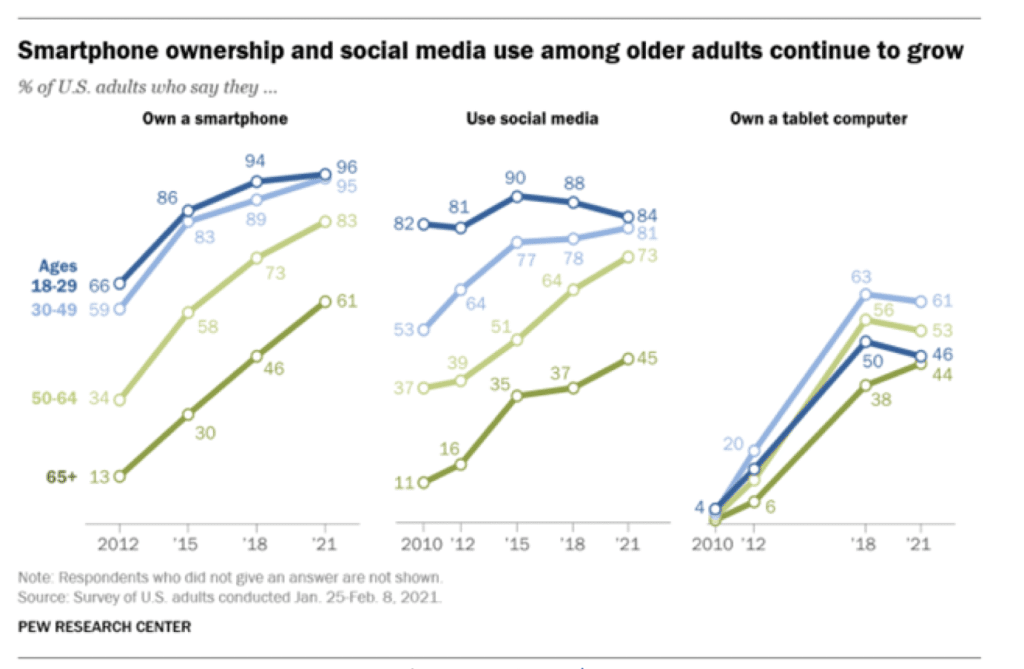For many years, mobile technology seemed to be an alien world for seniors. Clunky phones with complicated interfaces and confusing data plans kept them from joining the digital revolution. You have probably experienced frustration in the past trying to get Mom to keep her phone charged and answer your calls.
However, things are changing. New, user-friendly devices and accessible plans are unlocking the transformative potential of mobile technology for older adults.
Simplifying the Smartphone Experience
Smartphones are now powerful tools for staying connected, informed, and entertained. However, learning to use them can be a challenge for seniors. Thankfully, manufacturers are stepping up.
Larger screens, simplified interfaces, and voice-activated features make smartphones more intuitive and less intimidating. Specialized apps cater to seniors’ needs, providing features like enlarged fonts, emergency call buttons, and medication reminders. Companies like Doro and Samsung offer senior-focused phones with pre-loaded apps and simplified menus.
Affordable Connectivity
Fear of exorbitant bills and confusing contracts often discouraged seniors from embracing mobile technology. However, the rise of mobile virtual network operators (MVNOs) has changed the game. MVNOs offer cellular phones with no contracts that are often more affordable and flexible than traditional carrier options.
Seniors can choose plans with data allowances tailored to their needs, eliminating the worry of overage charges. Their newfound freedom allows them to experiment with different apps and services without committing to long-term contracts.
Bridging the Digital Divide
Despite the advances, challenges remain. Access to devices and internet connectivity can be a hurdle for seniors in low-income communities. Additionally, a lack of technical knowledge and digital literacy can create barriers to adoption.
Addressing these challenges requires a multi-pronged approach. Government initiatives can provide subsidized devices and internet access programs. Community centers and libraries can offer training workshops to bridge the digital divide. Family members can play a crucial role by providing patient guidance and support.
The Impact of Connection on Seniors
The benefits of mobile technology for seniors are undeniable. They can combat loneliness and isolation by connecting with family and friends anywhere through video calls and messages.
Additionally, they can engage with communities of like-minded individuals, sharing experiences and forging new connections through social networks. Mobile apps can also help manage chronic health conditions, medication schedules, and doctor appointments, promoting well-being and independence.
A Growing Trend

The rising adoption rates of Americans 65 and older reflect the impact of mobile technology on them. Surveys show that smartphone ownership among seniors in the US doubled between 2013 and 2021, reaching 61 percent. Analysts expect the trend to continue, with mobile technology becoming an increasingly integral part of seniors’ lives.
Building a More Inclusive Digital Landscape
Making mobile technology accessible to all seniors requires a collaborative effort. Manufacturers must prioritize user-friendly devices and accessible interfaces. Mobile operators should continue to offer affordable and flexible plans. Community organizations and government agencies need to bridge the digital divide. And most importantly, families and friends should provide encouragement and support.
By working together, we can ensure that no senior is left behind in the digital age.
